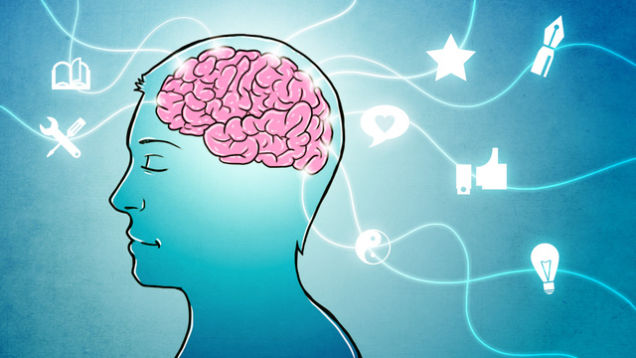Guest Writer for Wake Up World
While the idea of having either a sunny brain or a rainy brain is a little bit extreme, it’s not too far off base because optimistic brains actually do function differently than pessimistic ones.
As science has begun to unravel and validate the complex neurobiology of positive emotion and optimism, it’s been discovered that three brain regions play a crucial role in making and keeping you optimistic.
How Your Brain Makes Optimism
The prefrontal cortex (PFC), the “executive center” of your brain, guides your behavior, regulates emotion, and motivates you towards reward and away from pain or danger. The PFC also allows you to set goals and plan for and imagine the future, which are directly related to optimism.
[pro_ad_display_adzone id=”110028″]
The second part(s) of your brain involved in creating optimism are your amygdala (there are two of them), which are the triggers for raw emotions such as fear and rage or delight and joy.
The third essential players in creating an optimistic brain are the areas located mostly in the midbrain making up your reward circuit and involved in the release of dopamine, the neurotransmitter most closely associated with reward. The reward circuit and corresponding punishment circuit supply the necessary motivation for most of your behaviors. The reward circuit is activated any time you perform behaviors that you enjoy. Studies have shown that stress reduces activity in the reward circuit.
While optimism has a substantial hereditary component, like any personality trait, it’s also heavily influenced by experience. Only 30-50% of most personality traits are genetically inherited. The good news is that this means 50-70% of how optimistic you are depends on environment and your effort and input. The science of epigenetics is confirming that social and environmental factors alter your genetic code and that the genes you’re born with don’t have to be your destiny.
The PFC, involved in optimism and the reward circuit, is also conveniently in charge of learning, and it can be strengthened and exercised much like you pump up your biceps. Your brain is malleable and can learn to be more optimistic.
Ways To Build An Optimistic Brain
In order to survive, our ancestors’ brains were wired to notice and remember the bad while pretty much ignoring the good. Recalling a near miss or deadly predator’s territory was much more likely to allow them to pass on the genes than remembering a nice napping spot. Although this negativity bias developed for an important reason, it gives your brain a constant negative slant and leaves you worried and feeling stressed out today. But there are ways to give your brain a more positive tilt.
Look for and take in the good – In an effort to use neural resources efficiently, your brain doesn’t automatically recognize the good. It’s job is to be on the alert for danger and protect you. To counteract this natural tendency, you have to look for, put emphasis on, and create goodexperiences. This involves becoming aware of what good is present in your life and making the thought an embodied experience accompanied by positive feelings, sensations, desires, and actions.
Keep long term rewards in mind – Because your PFC is concerned with imagining and planning for your future, you can keep it motivated and give it something to look forward to by focusing on potential benefits, like health, monetary, or relationship rewards. Take the time to visualize positive outcomes every day. In your brain, imagining something and doing it are not all that different. The same neurochemicals are released and neurons fire when you are just thinking. Every time you visualize, you’re building up your brain’s ability to sustain positive emotions.

Well-Being Therapy – Developed by Giaovanni Fava, of the University of Bologna in Italy – has been known to help people adopt a more optimistic outlook and hold onto positive emotions longer by most likely strengthening the PFC’s interactions with the reward and pleasure circuits. Well-Being Therapy consists of three exercises done everyday for a week:
- Three times a day write down one positive thing about yourself and one positive about someone you interact with regularly.
- Express gratitude often. Say “thank you,” keep a gratitude journal, write an appreciative note to someone, or make a caring phone call. Do whatever feels appropriate to you, but make a point to notice and express your gratitude.
- Compliment others regularly. Start actively looking for opportunities to give authentic compliments, and you might be surprised at the multitude of reasons you find, such as a coworkers’ thoroughness, someone holding the door for you, or a neighbor’s beautiful flower bed. When handing out your kind words, look the person in the eyes and make a connection. Don’t forget to include yourself in the compliments.
Too Much Of A Good Thing
While studies have shown that pessimism and being able to see the worst in a situation actually make for better lawyers, an overwhelmingly negative outlook can lead to anxiety and depression, sap your motivation, and suck the joy out of your relationships and life. However, it is possible to carry a positive outlook to unrealistic extremes. You probably know a “Positive Pollyanna” or two like this. You might even be one!
An excessively positive attitude impairs your ability to consider consequences, learn from mistakes, and postpone immediate gratification. Too much optimism can be inappropriate and get a person into trouble. If you continuously use your credit card to make purchases adding to the already astronomical balance thinking “Oh well, I’ll just work some overtime this month,” that’s not a good strategy either.
In this case, you would want to lower the activity in the brain’s reward circuit and weaken connections between involved areas. For example if you are tempted to buy that expensive new car you really can’t afford, you might remind your brain of the detriments: a car’s value drops dramatically as soon as it’s driven off the lot; how you’ll feel when its beautiful paint job gets a scratch; how the high payments will force you to not spend any money on other things you enjoy.
What you want to shoot for here is realistic optimism.
Previous articles by Debbie Hampton:
- Naming and Taming Worry and Anxiety
- Understanding the Difference Between Emotions and Feelings – and Why It Matters
About the author:
 Debbie Hampton recovered from decades of unhealthy thinking and depression, a suicide attempt, and resulting brain injury to become an inspirational and educational writer. On her website, The Best Brain Possible Debbie shares how she rebuilt her brain and life to find joy and thrive. She wants you to know that you can do it too! You can quickly learn the steps to a better you in her book Beat DepressionAnd Anxiety By Changing Your Brain with simple practices easy to implement in your daily life. Improve your brain, improve your life.
Debbie Hampton recovered from decades of unhealthy thinking and depression, a suicide attempt, and resulting brain injury to become an inspirational and educational writer. On her website, The Best Brain Possible Debbie shares how she rebuilt her brain and life to find joy and thrive. She wants you to know that you can do it too! You can quickly learn the steps to a better you in her book Beat DepressionAnd Anxiety By Changing Your Brain with simple practices easy to implement in your daily life. Improve your brain, improve your life.
Connect with Debbie at Facebook.com/BestBrainPossible
[pro_ad_display_adzone id=”110027″]







